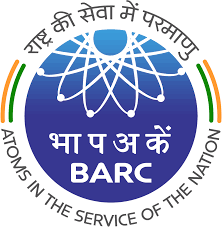CURRENT AFFAIRS
Get the most updated and recent current affair content on Padhaikaro.com
Nuclear Medicine
- Vaid's ICS, Lucknow
- 29, Sep 2021

Why in News?
Bhabha Atomic Research Centre (BARC), the premier research organization of the Department of Atomic Energy (DAE), has evolved a design for the first PPP Research Reactor for production of Nuclear Medicines
What is Nuclear Medicines?
- Nuclear medicine is a specialized area of radiology that uses very small amounts of radioactive materials, or radiopharmaceuticals, to examine organ function and structure. Nuclear medicine imaging is a combination of many different disciplines.
- These include chemistry, physics, mathematics, computer technology, and medicine.
- This branch of radiology is often used to help diagnose and treat abnormalities very early in the progression of a disease, such as thyroid cancer.
Because X-rays pass through soft tissue, such as intestines, muscles, and blood vessels, these tissues are difficult to visualize on a standard X-ray, unless a contrast agent is used.
This allows the tissue to be seen more clearly. Nuclear imaging enables visualization of organ and tissue structure as well as function.
The extent to which a radiopharmaceutical is absorbed, or “taken up,” by a particular organ or tissue may indicate the level of function of the organ or tissue being studied.
- Thus, diagnostic X-rays are used primarily to study anatomy.
- Nuclear imaging is used to study organ and tissue function.
- A tiny amount of a radioactive substance is used during the procedure to assist in the exam.
- The radioactive substance, called a radionuclide (radiopharmaceutical or radioactive tracer), is absorbed by body tissue. Several different types of radionuclides are available.
- These include forms of the elements technetium, thallium, gallium, iodine, and xenon. The type of radionuclide used will depend on the type of study and the body part being studied.
Facts for Prelims:
Vanadium
- Vanadium is a chemical element with the symbol V and atomic number 23. It is a hard, silvery-grey, malleable transition metal.
- In 1867 Henry Enfield Roscoe obtained the pure element. Vanadium occurs naturally in about 65 minerals and in fossil fuel deposits.
- It is produced in China and Russia from steel smelter slag.